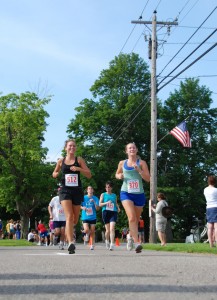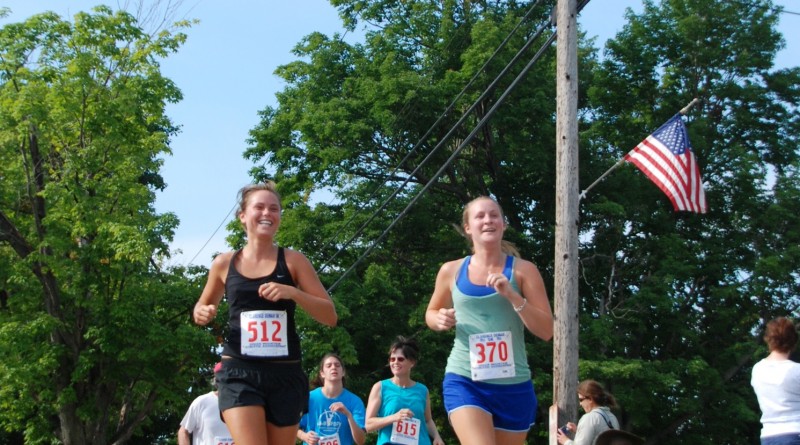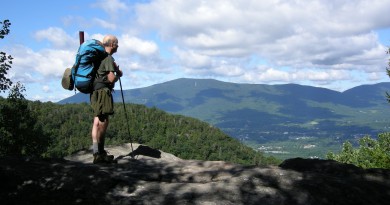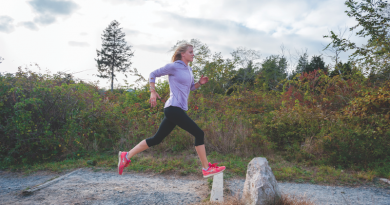My First 5K in 25 Years (And How You Can Run One Too)
I like to go for a run now and again, but I’m not a runner. There’s a big difference. I may lace up my Nikes a couple times each week, then trot around my neighborhood for a half-hour, but my 8:30 miles (on a good day) feel more like a heavy plod than a graceful stride down the road. When the weather cools off, and I get a good night’s sleep, I nip a few seconds off my time, only to see my stopwatch dole an extra half-minute back to me on my next run for no good reason.
I run for exercise. Running makes me feel lean and fit. It lets me justify eating a huge bowl of ice cream, even though the ice cream contains far more calories than I burn on my standard three-mile jog. It is a brief interlude during my hectic day, a time to get outside and let my mind wander. It is not a competitive outlet for me. In the winter, I ski against the clock, and in the summer, I whack tennis balls across a net as hard and as cleverly as I can. At best, running is one of many ways I stay fit for those two sports, along with hiking, paddling, lifting weights, and waterskiing.

When the invitation came from my cousin to enter the 28th annual Clarence DeMar 5K Road Race on July 4 in South Hero, I’m not sure why I agreed. For the exercise? I was likely going to run that morning anyway to offset the beer and hot dogs that were sure to hit my stomach prior to the evening’s fireworks. Group spirit? I hadn’t seen my cousin in a year, and the race offered an excuse to get together. A flashback to my youth? In 1978, I ran track in ninth grade. A decade later, I entered a few 10Ks in Central Park while working in New York City. It was probably a combination of all three reasons. Plus the Clarence DeMar was five kilometers (3.1 miles) long on a flat course. My regular runs were the same distance on a hilly route. No problem. I entered the race.A USA Track and Field–certified course, the Clarence DeMar 5K starts near the Masonic Temple in South Hero and heads south on South Street, past West Shore Road. After cresting a small hill, it rounds a cone, then doubles back, finishing at the Folsom School. The race, first held in 1983, began with both 5K and 10K events, though the 10K was eliminated in 2008. That same year, organizers added a free quarter-mile kids run in the schoolyard. Today, the Green Mountain Athletic Association runs the race, which draws about 350 people ages 8 to 78. Though the top male and female runners win a prize, most of the swag is dispersed to the crowd by random drawing. This family-oriented event benefits the South Hero Rescue Squad and GMAA. Interestingly, it is named for one of the top marathoners of the early 20th century.
Born in Ohio, Clarence DeMar won his first of seven Boston Marathons in 1911, a record which still stands today. He ran that prestigious race 34 times, finishing in the top 10 in half of them. Nicknamed “Mr. DeMarathon,” he competed in three Olympics, eventually earning a bronze medal on his third try in 1924 in Paris. His connection to South Hero came well before his first marathon. At age 16, DeMar lived in this island village on Lake Champlain while working at the Kinney Fruit Farm. In 1907, he matriculated at the University of Vermont and, without any experience, joined the cross-country running team during his junior year. However, he left the team and the university shortly after that to care for his mother.
I felt like leaving the starting line of Mr. DeMarathon’s namesake race as soon as the mob of runners convened there. I’m not claustrophobic, but standing shoulder to shoulder with 350 perspiring strangers—the temperature was already pushing 80 degrees—made the sweaty hair on my neck drip more profusely. I had forgotten that part of running races, but I didn’t have much time to contemplate it. Before I could say “Ready, Set,” the starter raised his pistol and blasted “Go!” I loped across the starting line, keeping pace with the ramped-up runners surrounding me. Had to. Group momentum. If I didn’t, I feared getting trampled.
The buildings thinned quickly and soon open fields lay to both sides of the road. I tried to relax and let my stride lengthen, but my legs felt heavy. I hoped it was because my pace was faster than usual, but it was more likely due to the slight uphill pitch of the road. About half-way to the turnaround point, a tall youthful man with exceedingly long legs sprinted down the other side of the road in the opposite direction. He had already rounded the cone though less than eight minutes had elapsed. Soon a string of strong runners went by, heading toward the finish, but the orange pylon was nowhere in sight.
Though this race was only a 5K, I pretended to be a lithe Olympic marathoner like Clarence DeMars and passed a few people. I was determined to run strongly the entire way, which is relative, of course. The long-legged leader crossed the finish line about the time I made the turn.
With the pavement now slightly downhill, my stride felt more fluid and my lungs less beleaguered. The crowd swelled as I neared the finish line. I picked up my pace, passed a couple of people for show, and then all but collapsed at the line. All of the oxygen on the planet seemed to have instantly evaporated into outer space.
Luckily it returned a moment later. An unexpected sense of accomplishment chased away whatever hurt I had inflicted upon myself. I reveled in the moment and the camaraderie with the other runners. A man resembling a patriotic Mad Hatter waved an American flag at me in a congratulatory gesture just for finishing. I knew right then, that the Clarence DeMar 5K Road Race had become my new July 4th tradition.
Maybe this means I’m a runner after all.



